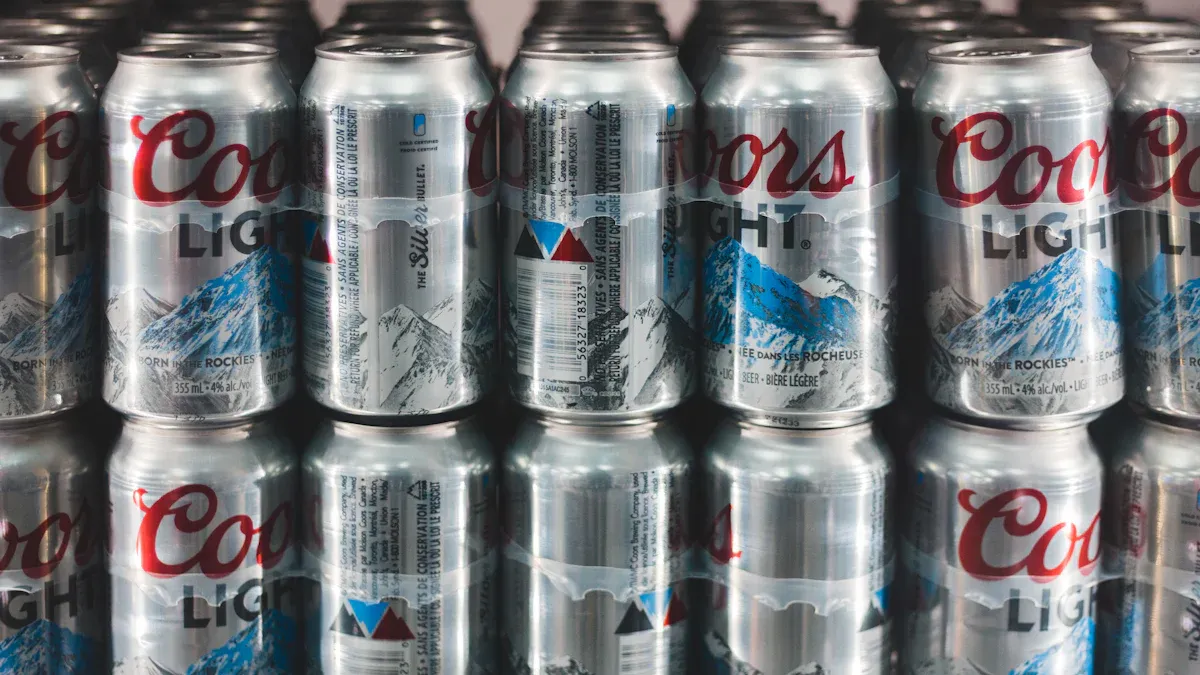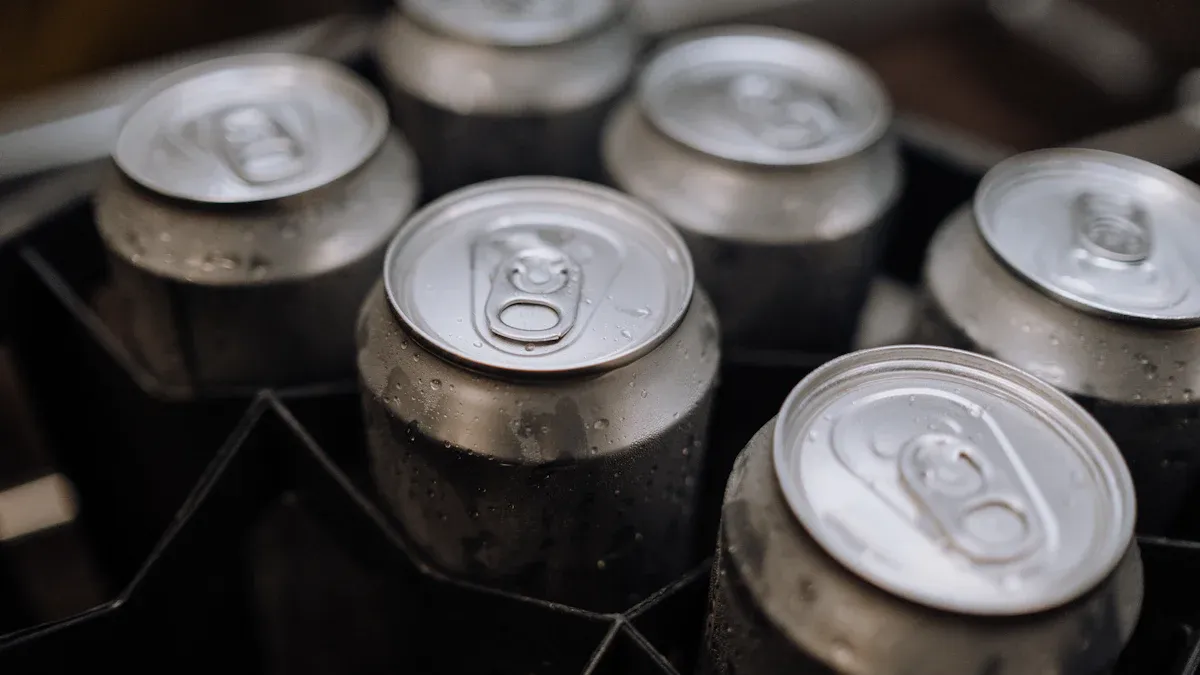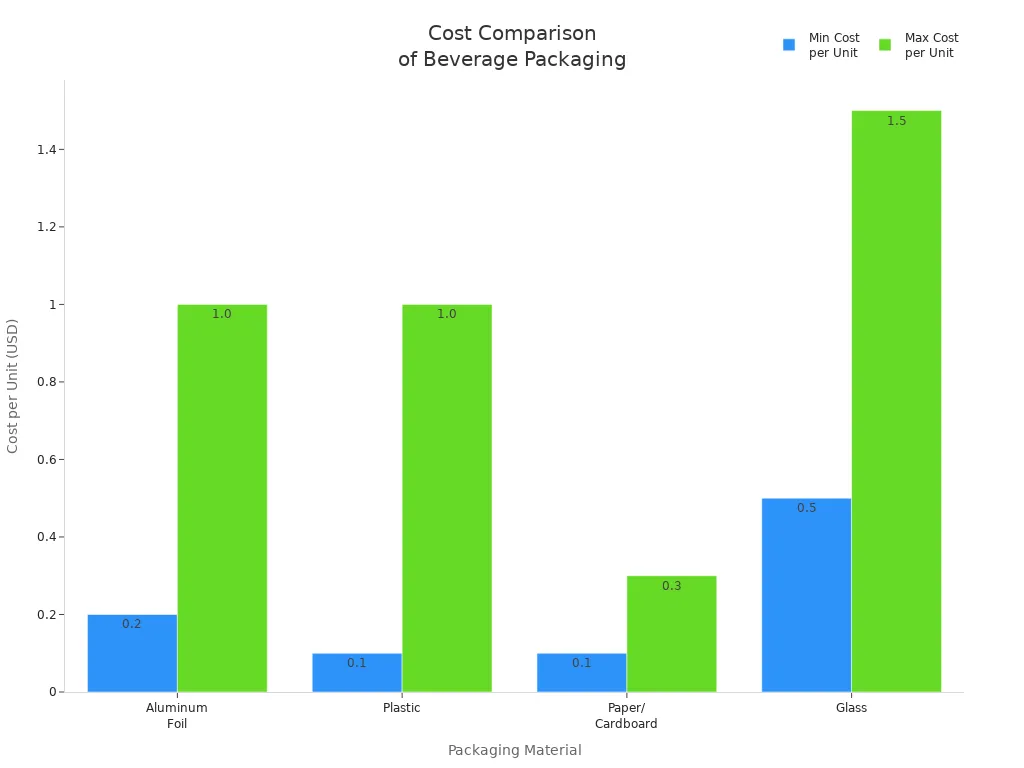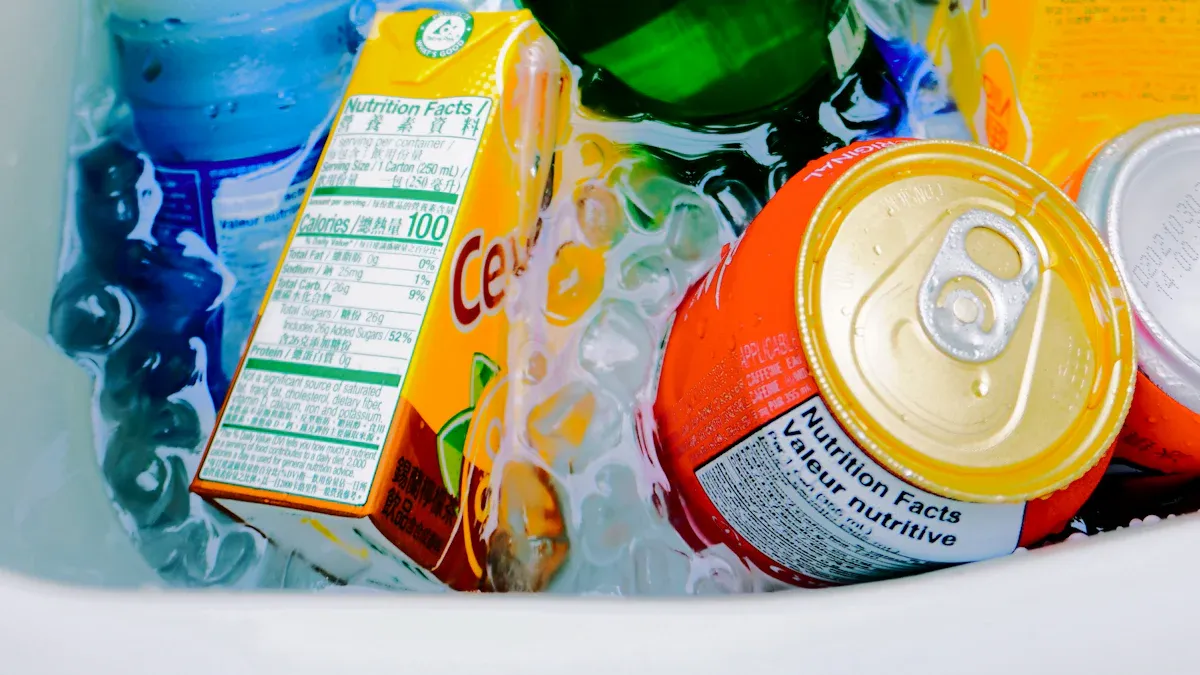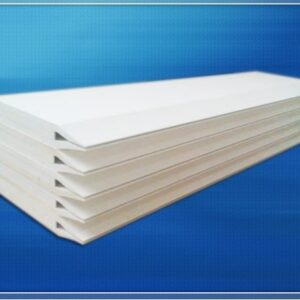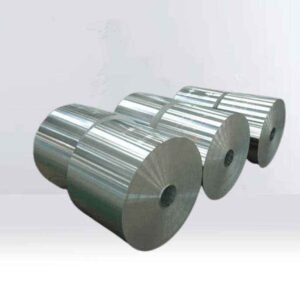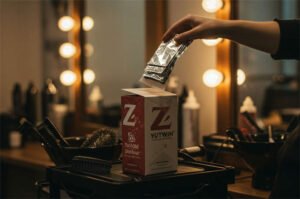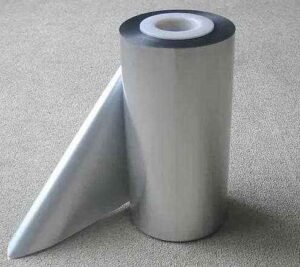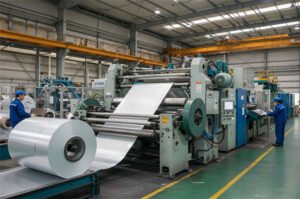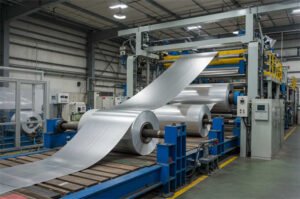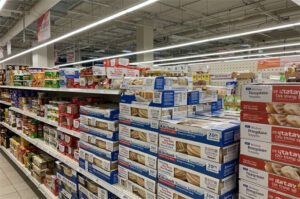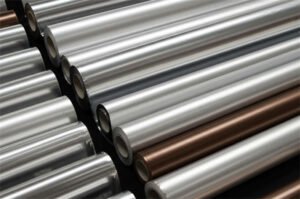Is aluminum foil for Beverages Packaging better than plastic, paper, or glass? Recent surveys show that consumers prioritize protection, sustainability, cost, and how well the packaging suits the drink. The table below highlights the key factors influencing their choices:
| Factor Considered by Consumers | Supporting Data / Insight |
|---|---|
| Sustainability (especially recyclability) | Over 70% in France, Italy, Spain, and the UK prefer beverage cans made with aluminum foil for Beverages Packaging because they can be recycled and help the environment. |
| Recycling rates | In Europe, 76.1% of aluminum beverage cans, often using aluminum foil for Beverages Packaging, get recycled. |
| Influence of sustainability logos | 88% say the Metal Recycles Forever logo helps them decide what to buy. |
| Need for better recycling infrastructure | Over 70% want more recycling bins and improved collection methods for cans using aluminum foil for Beverages Packaging. |
- Consumers also care about reusability, how packaging impacts the drink, and whether it alters the taste.
الوجبات الرئيسية
- Aluminum foil packaging keeps drinks fresh. It blocks light, air, and water. It is strong and light to carry.
- Recycling aluminum foil saves energy. It helps cut down on waste. This makes it a good choice like glass and paper.
- Plastic packaging costs less and can be used in many ways. But it can harm the environment if not recycled right.
- Paper packaging is good for the earth and breaks down easily. But it does not protect drinks as well as aluminum or glass.
- Glass packaging keeps drinks safe and looks fancy. But it costs more and is heavier to move.
Aluminum Foil for Beverages Packaging
Properties and Benefits
Aluminum foil for Beverages Packaging has many good points. It is very pure, about 99.5%. This makes it safe for food and drinks. The foil is strong and bends easily. Makers can shape it into cans or pouches without breaking it. Its crystal structure helps it form well. Yutwin Aluminum foil gives packaging to cruise lines like Carnival and Royal Caribbean. They also supply Ball Metal beverage packaging. These examples show aluminum foil works for many drink types.
| Property Category | Key Properties and Relevance to Beverage Packaging |
|---|---|
| Purity | High purity (~99.5%) ensures material quality and safety for food contact. |
| الخواص الميكانيكية | High tensile strength, good elongation, and tear resistance provide durability and flexibility. |
| خصائص الحاجز | Excellent barrier against oxygen, water vapor, and light prevents spoilage. |
| مقاومة التآكل | Protective oxide layer ensures safe storage without contamination. |
| Surface Properties | Smooth surface allows easy coating and printing for branding. |
| Flexibility and Formability | Suitable for cold forming, enabling complex packaging shapes. |
| نطاق السُمك | Customizable thickness balances protection and material use. |
| Safety and Hygiene | Non-toxic, tasteless, and meets food safety standards. |
حماية الحاجز
Aluminum foil for Beverages Packaging blocks light, water, and air. This keeps drinks fresh and safe. The foil stops spoilage and keeps flavor in. Makers use it for milk and coffee capsules. It helps drinks last longer and taste good. Many dairy, coffee, and chocolate packages use aluminum foil.
Aluminum foil packaging lets drinks stay fresh longer. You do not need to keep them cold or add preservatives.
الاستدامة
Aluminum foil for Beverages Packaging can be recycled. Many places recycle aluminum cans a lot. This saves energy and cuts down on trash. Old cans become new ones after recycling. Makers add thin liners to cans. This stops the drink from reacting with the can. It keeps the drink and can safe. Recycling aluminum uses less energy than making new foil.
التكلفة
Aluminum foil for Beverages Packaging costs more than plastic or paper. It costs less than glass. The price changes with thickness and design. The chart below shows how much each type costs:
| مواد التعبئة والتغليف | Cost Range (per unit) | الملاحظات |
|---|---|---|
| Aluminum Foil (Metal) | $0.2 – $1.0 | Aluminum cans for carbonated beverages: $0.2 – $0.5 |
| بلاستيك | $0.1 – $1.0 | Standard plastic bottles: $0.2 – $0.4 |
| Paper/Cardboard | $0.1 – $0.3 | Custom designs may increase cost |
| Glass | $0.5 – $1.5 | Beverage bottles typically $0.6 – $1.0 |
Beverage Suitability
Aluminum foil for Beverages Packaging is best for drinks that need strong protection. Milk, coffee, and juice use this packaging a lot. It keeps air and light out. Ambient milk stays fresh for six to nine months. Coffee capsules keep their smell and taste for up to 18 months. The foil is light, so shipping is easier. This helps cruise lines and big events. Yutwin Aluminum foil supplies Carnival, Royal Caribbean, Ball Metal, and MSC Cruises. This shows aluminum foil works for many drinks.
العبوات البلاستيكية
الخصائص
Plastic beverage packaging uses two main materials. These are PET and HDPE. PET is clear and strong. It does not react with most chemicals. HDPE is more bendy and tough. It looks cloudy, not clear. Both are light and easy to shape. They can be made into bottles or other containers. The table below shows how PET and HDPE are different:
| الممتلكات | PET (Polyethylene Terephthalate) | HDPE (High-Density Polyethylene) |
|---|---|---|
| Clarity | Transparent | Opaque |
| المتانة | Good, but more brittle than HDPE | Excellent impact resistance |
| المرونة | Stiff | مرنة |
| Moisture Barrier | Superior | معتدل |
| Chemical Resistance | ممتاز | جيد |
| مقاومة درجات الحرارة | Up to 150°C | Up to 120°C |
| قابلية إعادة التدوير | Highly recyclable (code #1) | Widely recyclable (code #2) |
PET is best for clear bottles. HDPE is good for strong, water-safe containers. Both are recycled in many places.
Protection
Plastic packaging keeps drinks safe from water and air. PET bottles hold in bubbles for sodas. They also stop water vapor from getting out. HDPE bottles keep water from getting in. This helps milk stay fresh. Some bottles have special layers. These layers block light and air. This helps keep vitamins and taste safe. Plastic caps stop leaks and dirt. But aluminum packaging blocks light and air even better.
Tip: Light plastic bottles can still protect drinks well and use less plastic.
الاستدامة
Plastic packaging can be recycled. PET and HDPE bottles are collected and made into new things. Many companies use recycled plastic now. But plastic trash is still a big problem. People use more plastic every year. Recycling is getting better. By 2050, experts think over 75% of plastic packaging will get recycled if rules stay strong. Using bottles again and making them lighter helps cut waste and save energy.
التكلفة
Plastic packaging costs less than glass or aluminum. It is cheap, especially when made in big amounts. The table below shows how much each type costs:
| مواد التعبئة والتغليف | Cost-Effectiveness | الخصائص الرئيسية |
|---|---|---|
| العبوات البلاستيكية | Economical, bulk savings | Strong, easy to transport |
| رقائق الألومنيوم | فعالة من حيث التكلفة | Good for temperature retention |
| Paper/Cardboard | بأسعار معقولة | Lightweight, customizable |
| Glass Packaging | Higher cost | Durable, reusable |
Plastic bottles help save money for makers and buyers.
الملاءمة
Plastic packaging works for many drinks. PET bottles are used for sodas, water, and juice. HDPE bottles are good for milk and sports drinks. Plastic bottles are strong and do not break easily. You can close them again after opening. They come in many shapes and sizes. People like them because they are light and easy to carry. PET bottles are clear, so you can see the drink. The drink industry uses plastic packaging because it is handy, safe, and can be recycled.
Paper Packaging
الخصائص
Paper packaging for drinks uses special coatings to make it stronger. These coatings help stop gas and water from getting in. Makers use PBSA coatings to protect the paper. The paper stays strong even if you touch it a lot. The surface is treated so coatings stick better. This makes the package last longer. Most parts come from plants and break down in compost. The table below lists the main properties:
| Property Type | Property Description |
|---|---|
| الخصائص الفيزيائية | Good at blocking gas and water, strong when squeezed, wet like PET, tough layers |
| الخواص الكيميائية | Changed surface, strong paper-polymer links, breaks down fully, not very toxic |
| Environmental/Additional | Made to break down, compostable, helps cut plastic waste |
Protection
Paper packaging keeps drinks safe from water and air if coated well. Coated paper helps drinks stay fresh for a while. But it does not block air and water as well as aluminum foil or plastic. The coating type changes how well it protects. Wax-coated paper is greener and easier to recycle than silicone-coated paper. Good sealing is needed to keep out water. Paper packaging works for many drinks but protects less than metal or plastic.
Note: Paper packaging stops some water, but aluminum foil and plastic keep drinks fresh longer.
الاستدامة
Paper packaging is good for the environment. Most paper cartons use plant-based coatings and renewable materials. These break down in compost, with about 70% gone after 18 weeks. Paper packaging helps cut plastic trash and supports recycling. Many countries want people to use more paper cartons to help nature. The FAO says paper packaging is important for green food systems.
التكلفة
Paper packaging costs less than glass or aluminum. It may cost a bit more than simple plastic bottles. The price depends on how many layers and what coating is used. Simple paper cartons are cheap for juice and milk. Cartons with more layers cost more but protect better and last longer. Many drink companies pick paper packaging to save money and help the planet.
الملاءمة
Paper packaging is best for milk, juice, tea, and some fresh drinks. The table below shows what drinks use it and why:
| Beverage Types | Packaging Type | Features & Reasons |
|---|---|---|
| منتجات الألبان | Composite paper cartons | Good for long shelf life, safe at room temperature |
| Juice, Tea, Coffee | Composite paper cartons | Keeps taste and nutrients, works for shelf or fridge |
| Fresh-keeping beverages | Paper/plastic 4-layer | Needs to be cold, keeps taste and nutrients, good for fresh drinks |
Paper packaging can be heated to kill germs, so drinks last longer. It also helps the environment and meets what buyers want for green choices.
Glass Packaging
الخصائص
Glass packaging has special features that make it popular for drinks.
- Glass keeps drinks fresh for a long time and looks fancy.
- It can be recycled many times and often has 60–80% recycled glass, says the Glass Packaging Institute.
- Glass bottles can handle hot washing, so they can be used again and again.
- Glass blocks gases like oxygen and carbon dioxide, which helps keep drinks tasting good.
- New ways of making glass have made bottles stronger and harder to break.
- Glass keeps its shape, so brands can make their bottles stand out.
- The clear look and cool feel of glass make drinks look and feel nice.
- Glass does not let anything in or out, so it does not mix with the drink inside.
Protection
Amber glass bottles keep drinks safe from light, air, and water. This glass stops UV and blue light, so drinks do not get ruined. Glass seals tightly, so bubbles and taste stay inside. Glass does not react with drinks, so the flavor and smell do not change. Many companies use glass for sodas, juices, and beer because it keeps drinks fresh and high quality. The FDA says glass is safe for food and drink packaging.
Tip: Amber glass bottles help drinks stay fresh by blocking light and air.
الاستدامة
Glass packaging helps the planet.
- Glass can be recycled forever and reused without losing quality.
- Many bottles have up to 80% recycled glass, so fewer new materials are needed.
- Glass can be filled again and again, which means less trash.
- Old bottles can become new ones, saving energy and cutting pollution.
- Glass does not let out bad chemicals into nature.
- In Europe, over 75% of glass bottles get recycled, says the European Container Glass Federation.
التكلفة
Glass packaging costs more than plastic, paper, or aluminum.
| مواد التعبئة والتغليف | Cost Range (per unit) | الملاحظات |
|---|---|---|
| Glass | $0.5 – $1.5 | Looks fancy, costs more to ship because it is heavy |
| رقائق الألومنيوم | $0.2 – $1.0 | Light, costs less |
| بلاستيك | $0.1 – $1.0 | Cheapest, easy to move |
| Paper/Cardboard | $0.1 – $0.3 | Cheap, light |
Glass is heavy, so it costs more to ship. But many brands pay more for glass because it is strong, can be used again, and looks nice.
الملاءمة
Glass bottles are good for many kinds of drinks.
Drinks often put in glass are sodas, juices, wines, spirits, beers, ciders, cold brew coffees, herbal teas, kombucha, mineral water, and flavored milks. Glass keeps drinks tasting right because it does not react with them. It holds bubbles better than plastic, so it is great for fizzy drinks. Glass bottles help brands look fancy and can be made in different shapes and colors. Many companies pick glass for drinks that need to last long and be high quality, like craft sodas and special teas. Glass can be used again and recycled, so it is a green choice for drink packaging.
Material Comparison
Protection
When you look at drink packaging, protection matters a lot. Glass is the strongest at stopping gases and liquids. It keeps air and water out. This helps drinks taste good and stay fresh. But glass is heavy and breaks easily. Aluminum foil for Beverages Packaging is also great at blocking things. It stops water, oxygen, and light. This helps drinks last longer and stay fresh. Many companies use it for milk, coffee capsules, and juice. It is light and strong, so cruise lines and big events like it. Plastic packaging can protect drinks well too. If it has many layers, it works better. PET plastic keeps bubbles in sodas and blocks water vapor. How well plastic protects depends on its type and thickness. Paper packaging does not protect as much as glass or aluminum. Even with coatings, it only keeps out some air and water. Glass and aluminum foil for Beverages Packaging are best for protection. Plastic and paper protect drinks okay, but not as much.
Note: Glass and aluminum foil for Beverages Packaging are best for keeping drinks fresh and safe from air, light, and water.
الاستدامة
Sustainability is important to companies and buyers. Glass can be recycled many times and stays strong. Some glass bottles have up to 80% recycled glass. But glass is heavy and takes lots of energy to make and move. Aluminum foil for Beverages Packaging is also easy to recycle. In Europe, more than 76% of aluminum cans get recycled. Recycling aluminum uses less energy than making new foil. But aluminum does not break down in nature. It is hard to recycle if dirty or mixed with other stuff. Plastic packaging like PET and HDPE can be recycled. How much gets recycled depends on local rules and the kind of plastic. Plastics with many layers are harder to recycle. Paper packaging often does better than plastic in life cycle tests. If made from plants and compostable coatings, it is greener. But paper needs coatings to protect drinks. These coatings can make recycling harder.
| مواد التعبئة والتغليف | Environmental Impact Summary | Key Factors |
|---|---|---|
| Plastic (PET, HDPE) | Often lower impact than glass and aluminum | Lightweight, lower production energy, better with recycled content |
| Glass | Higher environmental burden | Heavy, energy-intensive, reusable |
| ألومنيوم | Mixed results, depends on recycling | Lightweight, recyclable, not biodegradable |
| الورق | Often better than plastics | Renewable, compostable, needs improved recycling |
Tip: Reusing and recycling packaging helps make all materials more sustainable.
التكلفة
Cost matters to makers and buyers. Aluminum foil for Beverages Packaging costs more than plastic or paper. It costs less than glass. The price of aluminum changes with raw material costs. Aluminum is light, so shipping is cheaper than glass. Plastic packaging is usually the cheapest. It is easy to make a lot and costs less to ship. Paper packaging is also cheap, especially for simple cartons. If paper has many layers or special coatings, it costs more. Glass is the most expensive. It costs more to make, ship, and store because it is heavy and breaks easily.
- Main cost drivers for each material:
- Aluminum foil: Raw material prices, energy use, lightweight shipping, recycling challenges.
- Plastic: Low production cost, bulk manufacturing, lightweight.
- Paper: Layering and coating costs, renewable materials.
- Glass: High energy use, heavy shipping, reusable but costly.
Using light materials like aluminum foil for Beverages Packaging lowers shipping costs. That is why cruise lines and event companies pick it.
Beverage Types
Different drinks need different packaging types. Glass is best for fizzy drinks, juices, alcohol, and milk. It does not react with sour or bubbly drinks. It keeps them fresh. Plastic packaging works for water, juice, milk, and sports drinks. PET and HDPE bottles are strong and can be used again. Aluminum foil for Beverages Packaging is used for milk, coffee capsules, and juice. It keeps out air and light, so drinks last longer. Paper packaging works for milk, juice, and some teas. If mixed with foil or plastic, it protects drinks better. Composite cans and cartons help keep drinks safe but are not as strong as glass or aluminum.
| مواد التعبئة والتغليف | Best Beverage Types | التفاصيل |
|---|---|---|
| Glass | Carbonated drinks, juices, alcohol, milk | Recyclable, good for acidic drinks |
| بلاستيك | Water, juice, milk, sports drinks | Chemically resistant, reusable |
| رقائق الألومنيوم | Milk, coffee capsules, juice (in laminates) | Lightweight, strong barrier, used by cruise lines and events |
| Paper/Composite | Milk, juice, tea (with coatings) | Compostable, moderate protection |
Brands like Ball Metal and cruise lines such as Carnival and Royal Caribbean use aluminum foil for Beverages Packaging. It helps protect drinks and lowers shipping costs.
Choosing Packaging
Beverage Needs
Each drink needs its own kind of packaging. Milk and juice need strong barriers. These barriers keep out air and light. Water needs packaging that is light and easy to carry. Soda and other fizzy drinks need containers that hold bubbles in. These containers also stop leaks. Hot drinks like coffee need packaging that can handle heat.
Makers must think about how long drinks stay fresh. Shelf-stable milk needs packaging that blocks oxygen and light. Coffee capsules must keep out water and air. This keeps the flavor safe. Glass is good for drinks that need to last long. It also looks fancy. Plastic bottles are good for drinks you take with you. Paper cartons are best for drinks that need to be green and easy to store.
Tip: Good packaging keeps drinks fresh, safe, and tasty until the end.
Priorities
Companies have to think about many things when picking packaging. They care about being green, keeping drinks safe, cost, and how the package looks. Each material has good and bad points.
| العامل | Aluminum Foil & Metal Films | بلاستيك | Paper (Kraft, Paperboard) | Glass |
|---|---|---|---|---|
| الاستدامة | Recyclable but uses lots of energy | Often not recycled, can hurt nature | Comes from plants, breaks down, can be recycled | Can be recycled and used again, but uses lots of energy |
| Flammability | Does not burn easily | Burns easily | Burns easily | Does not burn easily |
| Stress & Strain Tolerance | قوي جدًا | قوي جدًا | Not very strong | Not very strong |
| قابلية التخصيص | Easy to shape and design | سهل التشكيل | سهل التشكيل | Can be shaped, but not as much |
| التكلفة | Costs more | Costs less | Costs less | Costs more |
Many brands and buyers care about being green. Glass and aluminum can be recycled many times. Paper comes from plants and breaks down in nature. Plastic is cheap and strong but can cause trash problems. Keeping drinks safe is important too. Aluminum foil and glass block air, light, and water very well. Plastic and paper do not protect as much but cost less. How the package looks matters. Glass looks fancy. Paper looks green. Aluminum and plastic can be made in many shapes and styles.
Aluminum foil for Beverages Packaging keeps drinks safe and can be recycled. Plastic packaging is cheaper and fits many types of drinks. Paper packaging is better for nature but does not protect as much. Glass keeps drinks fresh and looks fancy, but it costs more to ship. Each material works best for different uses. Companies should pick packaging based on the drink, how long it lasts, and green goals. Experts from the Glass Packaging Institute and European Container Glass Federation agree with these ideas.
Tip: Pick packaging that fits your drink and matches your brand’s green goals.
الأسئلة الشائعة
What makes aluminum foil a good barrier for beverage packaging?
Aluminum foil keeps out light, air, and water. This helps drinks stay fresh for a longer time. The European Aluminium Association says عبوات رقائق معدنية keeps taste safe and makes drinks last longer.
Can aluminum foil packaging be recycled?
Yes, most recycling centers take عبوات رقائق الألومنيوم. The Aluminum Association says recycling aluminum uses up to 95% less energy than making new aluminum.
Is glass or aluminum foil better for the environment?
Both glass and aluminum foil can be recycled many times. Glass is heavy and needs more energy to move. Aluminum foil is lighter and is also recycled a lot. The EPA says both have high recycling rates.
Which beverages use aluminum foil packaging most often?
Milk, juice, and coffee capsules often use aluminum foil packaging. Many cruise lines and drink companies pick foil because it is strong and light.
Does aluminum foil affect the taste of drinks?
No, aluminum foil does not change how drinks taste. Makers put a thin liner inside cans so the foil does not touch the drink.


